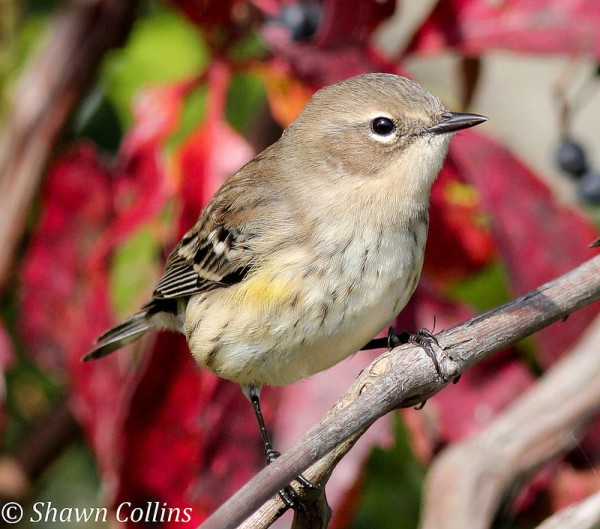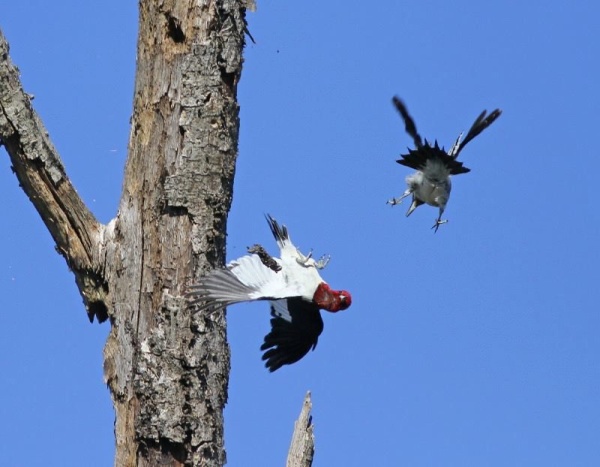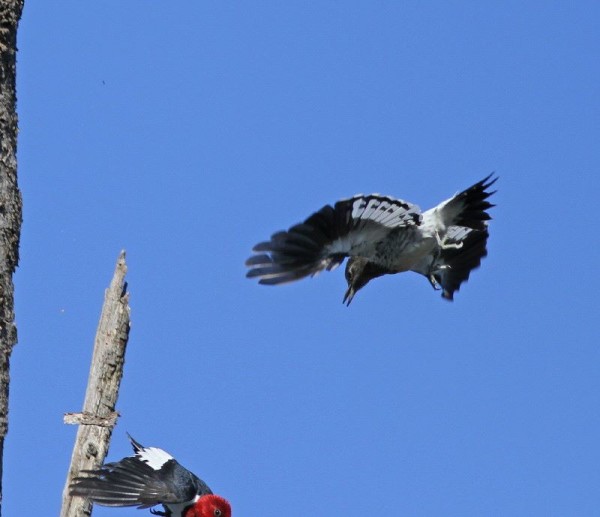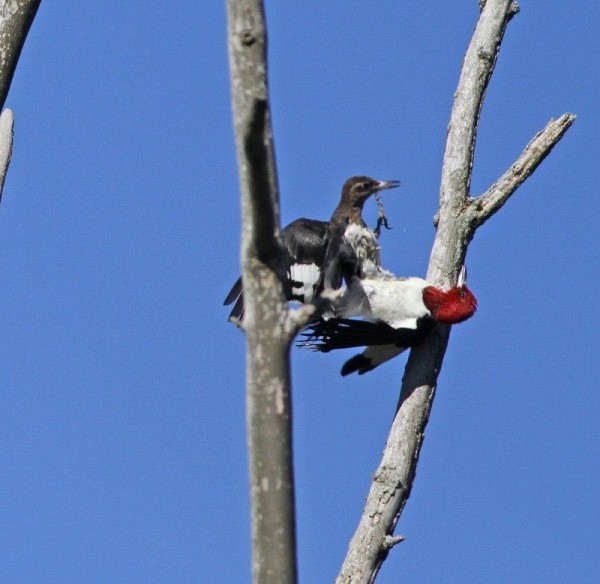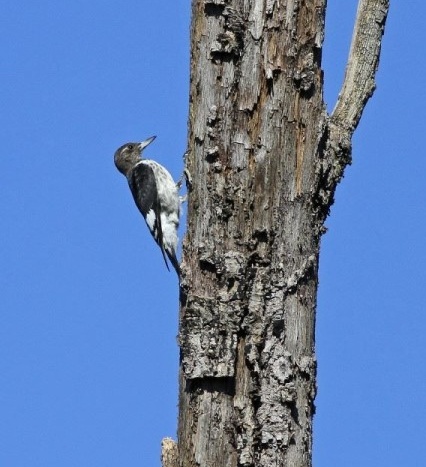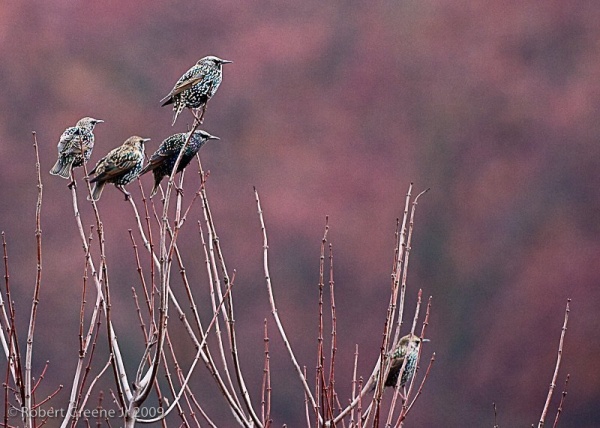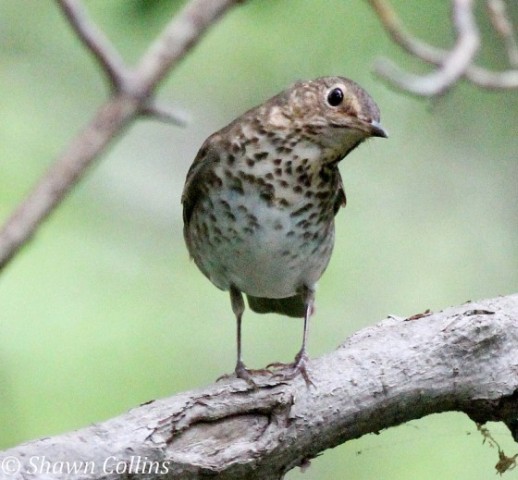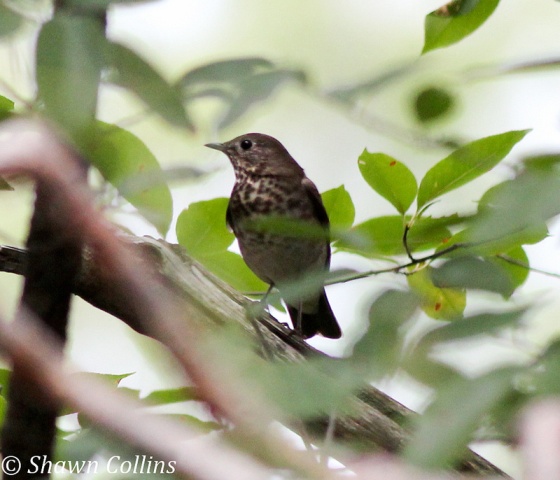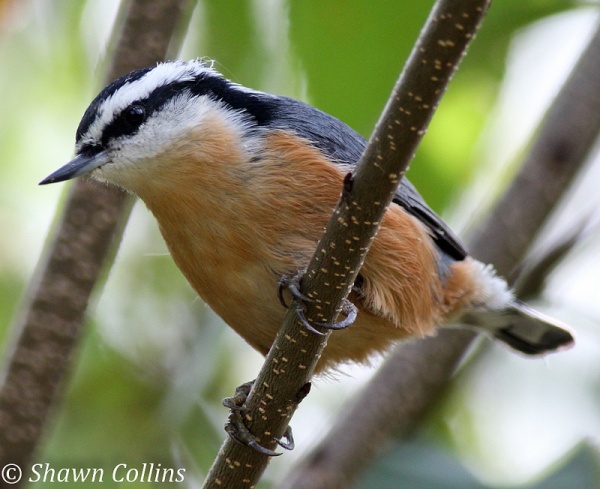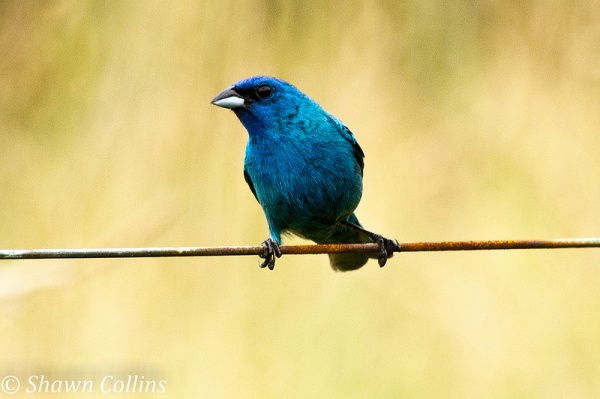If you’ve ever had a pet starling, you know their beaks are very powerful when opening. That’s because European starlings have the unusual characteristic that their jaws are strongest in reverse.
It’s a counter-intuitive trait. Our jaws are strongest when we clamp down. William Beecher discovered that starlings’ jaw muscles are at their best when they spring open and that their eyes automatically rotate forward for binocular vision as they open their beaks. This gives them an excellent look at potential prey in the hole they’ve just probed open and probably contributes to their success in winter.
Even as pets, starlings can’t help but probe. It’s in their blood. HayleyM‘s pet starling, Lolly, opens her son Aidan’s mouth as a dentist might. Notice that beak action!
Don’t try this at home!
Click here to view the original video and read in the comments how this orphaned starling became a pet. Also read the important notes in the p.s. below.
(video on YouTube, uploaded January 2011 by HayleyM)
p.s. Important notes:
* In North America, European starlings are one of only two wild birds (the other being the house sparrow) that can be kept as pets without a permit. Both species are listed as invasive.
* In addition to the possibility of people catching disease from birds, HayleyM added this note to the video: “After review by my good friends at Starling Talk (www.starlingtalk.net), I have found out that this is an ill advised practice. Apparently the bacteria in the human mouth can actually make a bird sick.”
